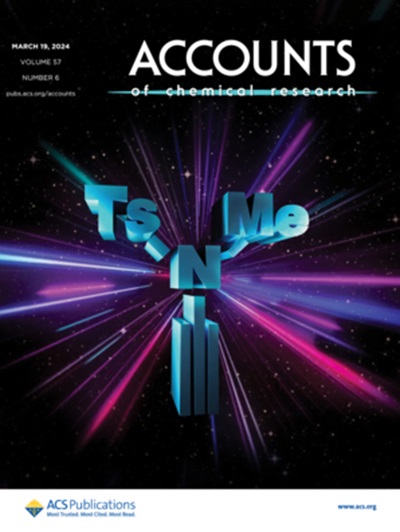Molecular Gridization of Organic Semiconducting π Backbones
IF 17.7
1区 化学
Q1 CHEMISTRY, MULTIDISCIPLINARY
引用次数: 0
Abstract
Organic π-conjugated molecules and polymers have emerged as some of the most promising candidates of semiconductors for future information, intelligent technology, and smart manufacturing because of their unique properties such as structural diversity, flexibility, stretchability, ultrathinness, light weight, low-cost and large-area fabrication procedures, and excellent biocompatibility. However, several severe challenges remain, including inferior optical and electronic properties compared to inorganic materials, poor stability and lifespan, low yields in solution processing patterning techniques, inadequate mechanical endurance, and difficulties in multifunctionalization. Particularly, there are still no big breakthroughs in terms of the common and long-term challenges, such as flexible organic light-emitting diodes (OLEDs) with printing procedures that could not be achieved at the calibration of commercialization, electrically pumped lasers that become the open global question, and organic integrated circuits and brain-like computing technologies at the conceptual stage. The nanosization of the molecular π systems is one crucial way to address the dilemmas that stem from the molecular limitation of organic semiconductors. Covalent nanoscale strategies of organic semiconducting π backbones enable not only effective suppression of phonon behavior, thereby significantly improving their charge transport capacity and exciton efficiency, but also facilitate functional integration for intelligent semiconductors.

有机半导体π骨架的分子格栅化
有机π共轭分子和聚合物因其结构多样性、柔韧性、可拉伸性、超薄性、轻量化、低成本和大面积制造工艺以及优异的生物相容性等特点,已成为未来信息、智能技术和智能制造领域中最有前途的半导体材料。然而,一些严峻的挑战仍然存在,包括与无机材料相比,光学和电子性能较差,稳定性和寿命较差,溶液处理图形技术的产量低,机械耐久性不足以及多功能化困难。特别是,在共同和长期挑战方面仍然没有取得重大突破,例如具有印刷程序的柔性有机发光二极管(oled)在商业化校准时无法实现,电泵浦激光器成为开放的全球问题,以及概念阶段的有机集成电路和类脑计算技术。分子π系统的奈米化是解决有机半导体分子限制所带来的困境的关键方法。有机半导体π骨架的共价纳米级策略不仅能够有效抑制声子行为,从而显著提高其电荷输运能力和激子效率,而且有利于智能半导体的功能集成。
本文章由计算机程序翻译,如有差异,请以英文原文为准。
求助全文
约1分钟内获得全文
求助全文
来源期刊

Accounts of Chemical Research
化学-化学综合
CiteScore
31.40
自引率
1.10%
发文量
312
审稿时长
2 months
期刊介绍:
Accounts of Chemical Research presents short, concise and critical articles offering easy-to-read overviews of basic research and applications in all areas of chemistry and biochemistry. These short reviews focus on research from the author’s own laboratory and are designed to teach the reader about a research project. In addition, Accounts of Chemical Research publishes commentaries that give an informed opinion on a current research problem. Special Issues online are devoted to a single topic of unusual activity and significance.
Accounts of Chemical Research replaces the traditional article abstract with an article "Conspectus." These entries synopsize the research affording the reader a closer look at the content and significance of an article. Through this provision of a more detailed description of the article contents, the Conspectus enhances the article's discoverability by search engines and the exposure for the research.
 求助内容:
求助内容: 应助结果提醒方式:
应助结果提醒方式:


